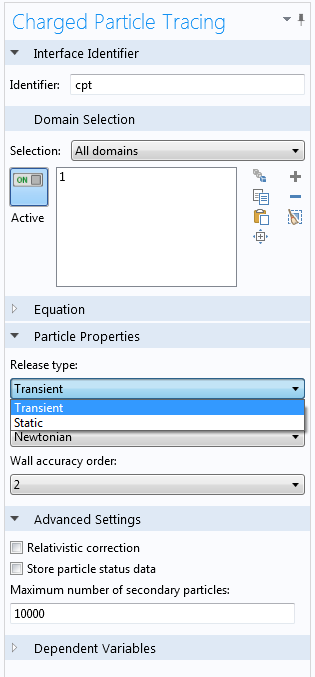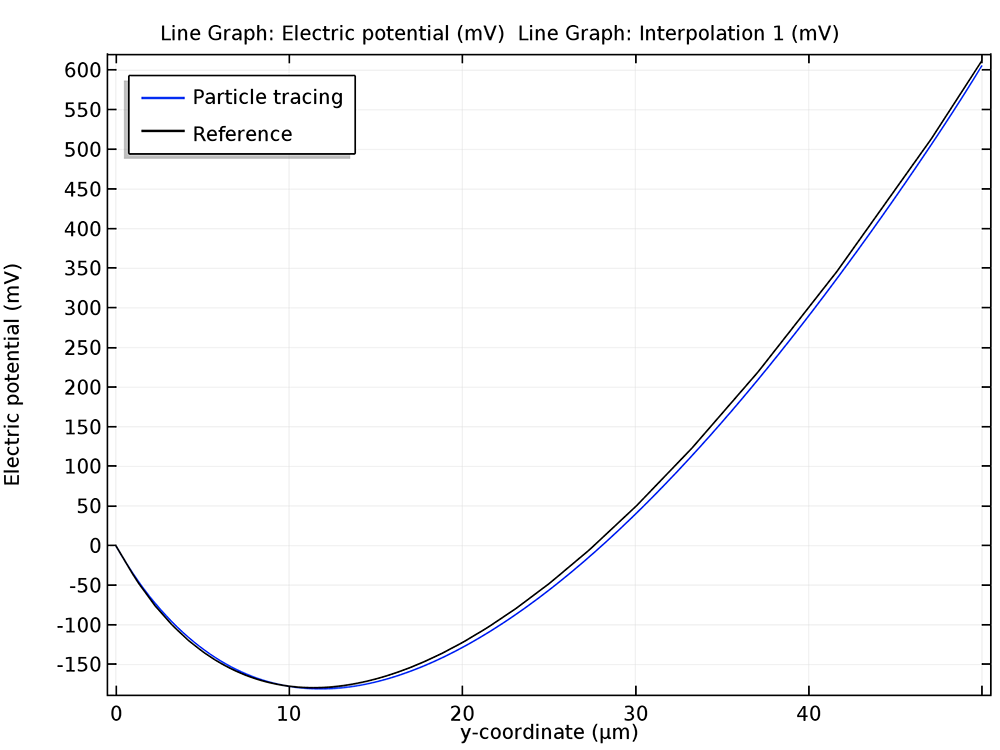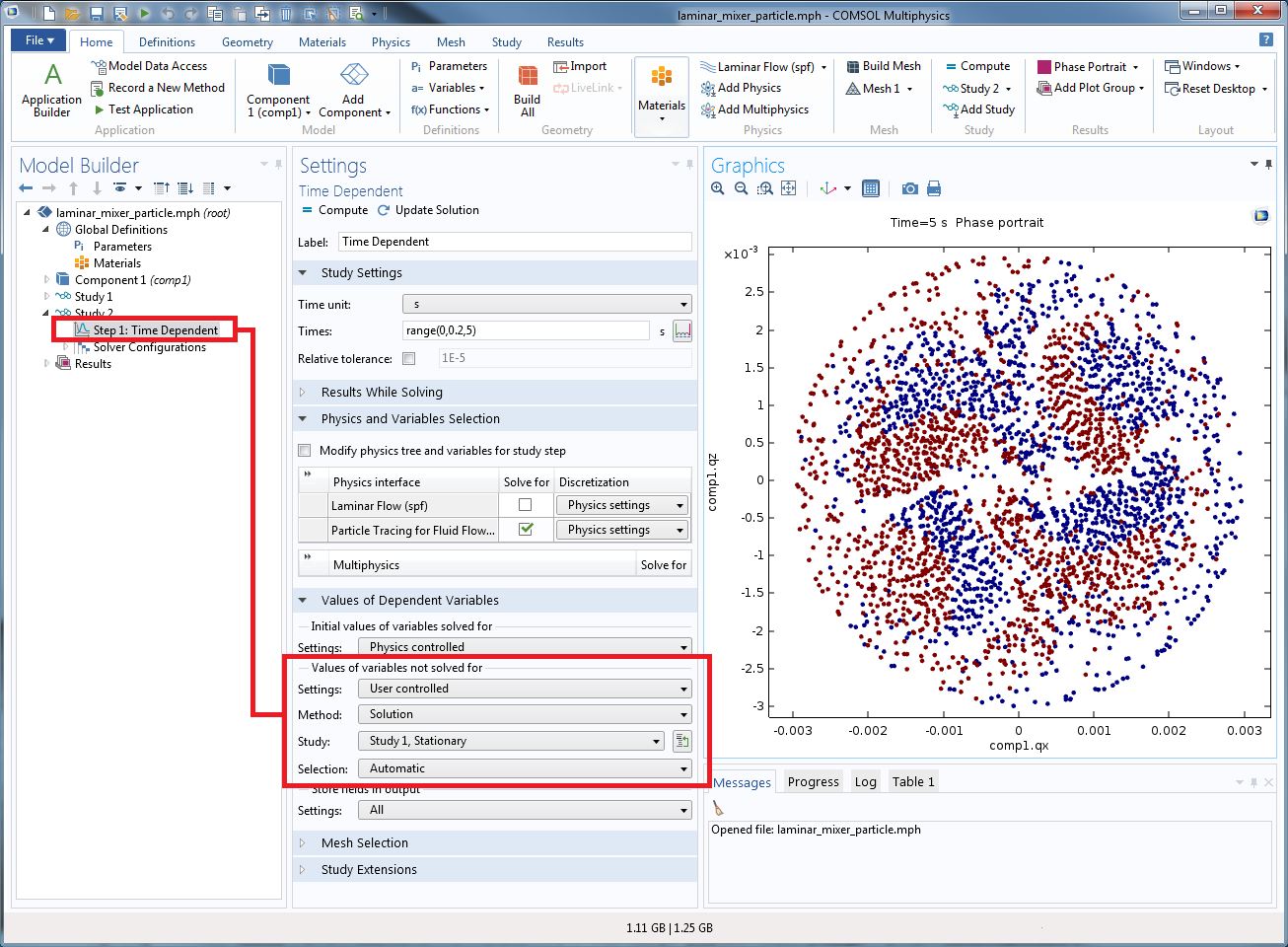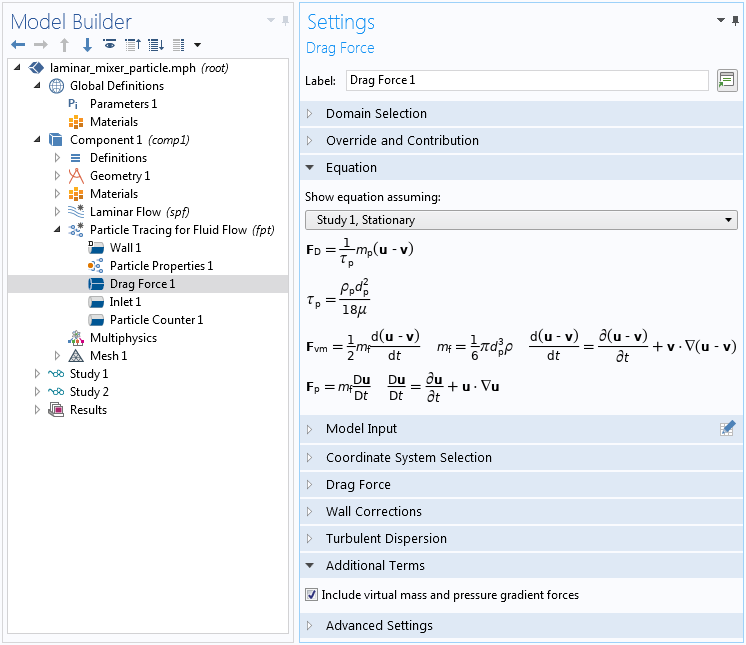

- #Particle tracing for fluid flow comsol 5.3 video for free#
- #Particle tracing for fluid flow comsol 5.3 video upgrade#
- #Particle tracing for fluid flow comsol 5.3 video full#
- #Particle tracing for fluid flow comsol 5.3 video crack#

Lower-dimensional elements can now be placed inside solids.
#Particle tracing for fluid flow comsol 5.3 video crack#
The Structural Mechanics Module includes tools for crack modeling, providing J-integral and stress intensity factor computations as well as crack propagation based on a phase field method. For users of the Structural Mechanics Module, contact analysis now includes functionality for analyzing mechanical wear with dynamic removal of material. Users can now simulate transient impact events in structural analyses using the mechanical contact functionality in the Structural Mechanics Module and MEMS Module. Transient contact, wear, and crack modeling The Ray Optics Module enables faster ray tracing and offers specialized tools for scattering from surfaces due to surface roughness and within volumetric domains due to Rayleigh and Mie scattering from particles.

For periodic structures within metamaterials and plasmonic devices, a new powerful polarization plot tool makes evaluation and visualization of transmitted and reflected waves significantly easier.
#Particle tracing for fluid flow comsol 5.3 video full#
The RF Module and Wave Optics Module provide a new option for port sweeps that enables faster computations of full S-parameter, transmission, and reflection coefficient matrices. New nonlinear material models are useful for modeling laminated iron core losses in electric motors and transformers. The new version of the AC/DC Module also provides specialized tools for the extraction of parasitic inductance with L-matrix computations, which is essential for designing printed circuit boards. The material data contains several types of permanent magnets, such as NdFeB, SmCo, and AlNiCo, with properties that depend on the temperature and the electromagnetic field. The AC/DC Module includes an expanded material library with 322 new magnetic materials from Bomatec. Laminated iron cores, parasitic inductance, fast port sweeps, and ray scattering Simulink is a product by The MathWorks Inc. The Liquid & Gas Properties Module can be used to compute properties for gas, liquids, and mixtures, enabling more accurate simulations within acoustics, CFD, and heat transfer.Įngineers can use the LiveLink for Simulink product for control design and cosimulation of COMSOL Multiphysics models in Simulink diagrams.
#Particle tracing for fluid flow comsol 5.3 video for free#
In addition to the advanced rheology models, the module also features functionality for free surface tracking using two-phase flow. The Polymer Flow Module can be used to design and optimize processes involving viscoelastic and general non-Newtonian fluids, which is beneficial in industries such as polymer, food, pharmaceutical, cosmetics, household, and fine chemicals.
#Particle tracing for fluid flow comsol 5.3 video upgrade#
Users with a current subscription of the Batteries & Fuel Cells Module will receive the Battery Design Module as part of the upgrade to version 5.6. In version 5.6, the Batteries & Fuel Cells Module has changed its name to the Battery Design Module while retaining all functionality. With this new product, we can provide users in the automotive, renewable energy, hydrogen technology, and electrochemical process industries with state-of-the-art modeling and simulation tools,” said Henrik Ekstrom, technology manager of electrochemistry products at COMSOL. “We see an important emergent market in the hydrogen economy, but also in understanding and optimizing existing electrolyzer processes. The Fuel Cell & Electrolyzer Module provides engineers in hydrogen technology with new functionality for investigating the conversion and storage of electrical energy. This type of analysis is useful within automotive and sonar research and development.įour new products expand what you can do with COMSOL Multiphysics, including modeling fuel cells and electrolyzers, polymer flow, control systems, and fluid properties. A new boundary element method formulation enables analyses of acoustics models that are up to an order of magnitude larger than previous versions. Certain classes of viscoelastic structural analysis are now more than 10 times faster. With all of these improvements, the CPU time improvements can even exceed 50% for time-dependent CFD,” said Jacob Ystrom, technology manager of numerical analysis at COMSOL. For CFD, we have improved the coupled velocity-pressure preconditioner and also added a brand new preconditioner that decouples the updates of these variables. The improvements are even more pronounced when using clusters, giving improvements in the range of 20–50% for both CPU time and memory requirements.

These improvements benefit most models using these solvers, giving performance improvements up to 30%. “In version 5.6, we have made general improvements to both the algebraic multigrid and the domain decomposition solver technologies.


 0 kommentar(er)
0 kommentar(er)
